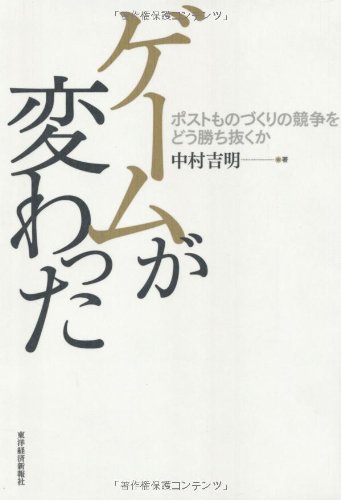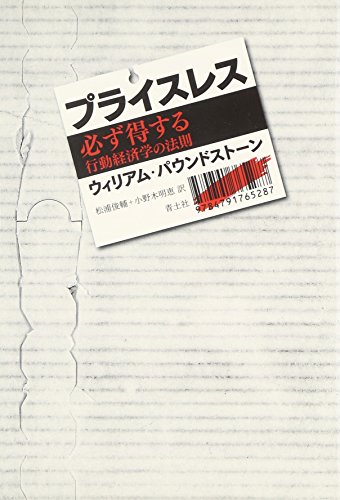1 0 0 0 OA 天才の概念と近代
- 著者
- 吉岡 洋
- 出版者
- 京都大学
- 雑誌
- 研究紀要 (ISSN:03897508)
- 巻号頁・発行日
- vol.4, pp.80-98, 1983-03-31
1 0 0 0 ジカチオシ性二鎖型LB膜の作製とその吸着特性
本研究は「ジカチオン性二鎖型LB膜の作製とその吸着特性」を中心に系統的に行われたものである。以上研究費補助期間中に得られた結果を以下に要約する。モノジカチオン性アルキルアンモニウム塩(SAC,DAC,DSACとTSAC),ジカチオン性アルキルアンモニウム塩(XSAC)および第1級アルキルアミン(ODA)の膜形成能について検討した。これらの物質のうちで、二つあるいは三つアルキル基を持つDSAC,TSACおよびXSACは安定な単分子膜を形成することが明らかにされた。また、ODAはpH10以上で安定な単分子膜を形成することが分った。一方、MOやNO水溶液上でのπ-A等温線の測定から、TSAC,XSACおよびODAの単分子膜は下層水中のNOやMOイオンと強く相互作用することがわかった。作製されたTSAC,XSACおよびODAのLB膜はカチオン性の性質を保持しており、NOやMOなどの色素イオンに対して高い吸着特性を示した。これらの吸着挙動はLB膜中の炭化水素鎖の充填状態やpHによって影響することが分かった。また、これらの色素の吸着は静電的な相互作用によって化学量論的に起ることもわかった。さらに、カチオン性LB膜中のNOやMOの吸着状態には差異があることが明らかになった。すなわち、MO分子は膜表面に対してほぼ垂直な配置を取り、一方NO分子はLB膜表面に横たわった配置を取る。これはMOとNOの分子構造の違いに起因するものと考えられる。この研究で得られた分子配置についての情報はカチオン性LB膜へのいろいろな吸着質の吸着挙動を理解するのに役立つことが期待される。
1 0 0 0 OA 「協同的な学び」を引き出すための音楽活動 : 子どもの「音への気づき」に着目して
- 著者
- 植田 恵理子
- 出版者
- 花園大学
- 雑誌
- 花園大学社会福祉学部研究紀要 (ISSN:09192042)
- 巻号頁・発行日
- vol.20, pp.37-47, 2012-03
従来から、幼稚園における音楽活動は、協同的な学びが重視されてきた。筆者は、「協同的な学び」を引き出す実践や、子どもたちが、その環境作りに対して積極的に取り組むための条件などに対し、これまでも事例研究を行い、考察と提案を行ってきた。本研究では、大阪府S 市S 幼稚園をフィールドに、音楽活動の事例の中で見られた園児の様子を「協同的な学び」と子どもの「音への気づき」の関連性において考察した。共に音を聞きあう活動や、音を工夫することによって得られる「気づき」を確認する活動などを繰り返すことにより、子どもたちは、音楽を共有するコミュニティを大切にし、音楽活動を楽しく行える環境を作り、整える力を発揮していった。筆者は、子どもの「音への気づき」を大切にした音楽活動が、「協同的な学び」を引き出し、共感しながら学んでいくために必要な環境を、子どもたちが意欲的に作りだすきっかけになることを明らかにした。
1 0 0 0 IR 現代青年の政治志向の形成に関する一考察-明大生調査より-
- 著者
- 井田 正道
- 出版者
- 明治大学大学院
- 雑誌
- 明治大学大学院紀要 政治経済学篇 (ISSN:03896064)
- 巻号頁・発行日
- vol.24, pp.161-172, 1987-02-10
未成年期における政治意識の形成過程に関する研究は、政治的社会化研究という名の下でここ30年近くにわたって欧米で蓄積されてきた分野である。なかでもアメリカにおける研究蓄積は、膨大な数にのぼる。それに対して、わが国では、政治的社会化という言葉自体、まだ馴染みがうすく、研究蓄積も未だ寒々しい状況にある。確かに、戦後日本はしばらくの間、政党制と社会構造の変容が激しく、成人後の政治行動に及ぼす初期社会化の影響力は欧米に比べ、かなり弱かったと考えることは可能であるし、そのことが日本における実証研究を遅らせた一因となっていたのかもしれない。しかし、今日の青年層1)は、55年体制成立後少なくとも15年以上経た後に初期社会科を経験しており彼らの政治意識の形成に関しては、家族をはじめとする初期往会化のエージェントの影響力がかなり大きく作用し、しかも今後におけるその影響力の残存も相当のものがあると思われる。
1 0 0 0 IR 初期社会学自己論の再検討 : 物語自己論から見たG. H. ミード自己論の意義と限界
- 著者
- 伊藤 智樹
- 出版者
- 富山大学
- 雑誌
- 富山大学人文学部紀要 (ISSN:03865975)
- 巻号頁・発行日
- vol.40, pp.59-83, 2004-03-01
1 0 0 0 ゲームが変わった : ポストものづくりの競争をどう勝ち抜くか
1 0 0 0 プライスレス : 必ず得する行動経済学の法則
- 著者
- ウィリアム・パウンドストーン著 松浦俊輔 小野木明恵訳
- 出版者
- 青土社
- 巻号頁・発行日
- 2010
- 著者
- 藤谷 陽悦
- 出版者
- 一般社団法人日本建築学会
- 雑誌
- 建築雑誌. 建築年報
- 巻号頁・発行日
- vol.1997, pp.91-92, 1997-09-20
- 著者
- 藤谷 陽悦
- 出版者
- 日本建築学会
- 雑誌
- 日本建築学会計画系論文集 (ISSN:13404210)
- 巻号頁・発行日
- vol.60, no.476, pp.185-194, 1995
"Housing Reform Exibition" was the exhibition held by Ofuna Denentoshi (Ofuna Suburbs) Co., Ltd. in the year 11 of Taisyo Era. In this same year. "Heiwa Kinen Tokyo Exhibition (Peace Memorial Tokyo Exhibition) /Bunka-mura was held in Tokyo, and two model house exhibitions of the Sakuragaoka Housing Reform Exhibitions were also held in Osaka. The issue of this report is to explain clearly the characteristics of the housing plans selected as the best in that exhibition, and to consider the relation between the best plans and the housing reform movement of those days. The details of the four remained constructions designed by Ofuna Denentosh (Ofuna Suburbs) Co., Ltd. will be reviewed. And make it clear that the residents of that new houses felt the change form the use of "Tatami" to "Chairs" in their main dining room, which was the focal point of the housing reform movement of that age, took place too for them.
1 0 0 0 OA ロボット技術による早期教育の支援と拡張
- 著者
- 田中 文英 松添 静子 高橋 利光
- 出版者
- 人工知能学会
- 雑誌
- 人工知能学会全国大会論文集 (ISSN:13479881)
- 巻号頁・発行日
- vol.26, 2012
本発表では、ロボット技術を活かして子どもたちの教育活動を支援する試みと、同教育環境を拡張する試みの二種類について、我々が行ってきている研究活動を報告する。前者に関してはケア・レシーバー型ロボットと呼ばれる新しいタイプの教育支援ロボットとその導入事例について述べ、後者については遠隔操作ロボットシステムを用いたコミュニケーション支援の活動について述べる。
1 0 0 0 OA ポリオミノとポリイアモンドを用いたアイソヘドラルタイリングの研究
- 著者
- Gurgel Ricardo Q. Cuevas Luis E. Vieira Sarah C.F. Barros Vanessa C.F. Fontes Paula B. Salustino Eduardo F. Nakagomi Osamu Nakagomi Toyoko Dove Winifred Cunliffe Nigel Hart Charles A.
- 出版者
- Centers for Disease Control and Prevention (CDC)
- 雑誌
- Emerging Infectious Diseases (ISSN:10806040)
- 巻号頁・発行日
- vol.13, no.10, pp.1571-1573, 2007-10
- 被引用文献数
- 3
We identified 21 rotaviruses in 129 patients with diarrhea in a Brazilian city with high rotavirus vaccine coverage. All rotaviruses were genotype P[4]G2 with 1 mixed infection with P[NT]G9. Although virus predominance could have occurred randomly, the vaccine may be less protective against P[4]G2. Prospective surveillance is urgently needed.
1 0 0 0 筋の分化と神経支配 : 比較解剖学と分子生物学との狭間
- 著者
- 木田 雅彦
- 出版者
- The Mammal Society of Japan
- 雑誌
- 哺乳類科学 = Mammalian Science (ISSN:0385437X)
- 巻号頁・発行日
- vol.40, no.2, pp.189-206, 2000-12-30
- 被引用文献数
- 1
1 0 0 0 OA 其角堂永機の交友圏 - 細木香以を中心に -
- 著者
- 越後 敬子
- 出版者
- 実践女子大学
- 雑誌
- 実践女子短期大学紀要 (ISSN:13477196)
- 巻号頁・発行日
- vol.33, pp.1-12, 2012-03-19
幕末の大通細木香以は、戯作者や狂歌師、俳諧師、商家の主人、幇間などを多くの取巻連を引き連れて、花街に芝居にと派手な遊びにうつつを抜かした。俳諧師其角堂永機もその一人で、豪勢な遊びに随行し、金銭的な援助を受けてきた。香以を取り巻く人的ネットワークは、のちの永機に多大な影響を与え、「明治最後の大宗匠」と称されるほどの華やかな人脈を作り出したのである。
- 著者
- 黒石 陽子
- 出版者
- 東京学芸大学
- 雑誌
- 東京学芸大学紀要. 人文社会科学系. I (ISSN:18804314)
- 巻号頁・発行日
- vol.63, pp.137-147, 2012-01-31
1 0 0 0 IR 芭蕉における『本朝一人一首』の受容 : 『嵯峨日記』・『おくのほそ道』を中心に
- 著者
- 陳 可冉
- 出版者
- 総合研究大学院大学文化科学研究科
- 雑誌
- 総研大文化科学研究 (ISSN:1883096X)
- 巻号頁・発行日
- no.8, pp.43-56, 2012-03
林鵞峰編『本朝一人一首』(寛文五(一六六五)年跋刊)は、日本漢文学の本格的な研究書の嚆矢として、新日本古典文学大系にも収録された名著である。今から三百二十年前の元禄四(一六九一)年、同書が落柿舎の机上にも置いてあったことは、芭蕉の『嵯峨日記』によって知られる。 落柿舎中の芭蕉は『本朝一人一首』を読み、中の詩作に対する自己の所感まで書き残しているのである。『本朝一人一首』が芭蕉と日本漢詩との接点を裏付ける重要な糸口であることは間違いあるまい。ところが、芭蕉研究における『本朝一人一首』の意義をめぐって、これまで十分な検討がなされているとは言い難い。本稿では、『本朝一人一首』の性格と特徴をよく把握した上で、『嵯峨日記』と『おくのほそ道』を中心に、芭蕉における『本朝一人一首』の受容について若干の考察を試みたい。 『嵯峨日記』四月二十九日・晦日の条は、いわば『本朝一人一首』の読書メモにあたる。稿者は、その前日である四月二十八日の条に焦点をあて、現在最も信頼された『嵯峨日記』の底本である野村家蔵本(原本所在未詳)を参照しつつ、四月二十五日の条の末尾との比較によって、『嵯峨日記』には本文と自注という二種類の異質な文章が併存し、しかも芭蕉はそれらを意識的に書き分けているのではないかと論じる。次に、「思夢」の話を扱う『本朝一人一首』巻五・高階積善「夢中謁白太保元相公」に注目し、芭蕉が評釈の手法を好んで用いたのは『本朝一人一首』の詩評からの影響であろう、という見解を述べる。 以上の結論を踏まえて、執筆時期が『嵯峨日記』に近い『おくのほそ道』をも俎上に載せ、句評の形式で曽良を紹介した「黒髪山」を取り上げ、鵞峰の詩評の特徴に合致した芭蕉の行文を分析する。さらに『おくのほそ道』「立石寺」・「尿前の関」における語句の出典として、『本朝一人一首』巻六・藤原実範「遍照寺翫月」と巻三・空海「在唐観昶法和尚小山」を指摘し、芭蕉と『本朝一人一首』所収の日本漢詩との関わりを探る。Honchō ichinin isshu (HII, hereafter), a masterpiece written by Hayashi Gahō, represents the first full-fledged research on Japanese kanshi. It is included in the Shin koten bungaku taikei series of classical Japanese literature. Bashō's Saga nikki (SGN) informs us that Bashō kept this book on the table in Kyorai's Rakushisha lodge. We know that while staying at Rakushisha, Bashō read through HII and made personal notes on the poetry in the book. There is no doubt that SGN provides us with an important clue to a possible link between Bashō and writings by the Hayashi family. However, there has not been much work done on how relevant HII is in research on Bashō. This essay illustrates the nature and the characteristics of HII before discussing how HII may have influenced Bashō, focusing on Oku no hosomichi (ONH) and SGN in particular.Bashō's entries on April 29th and 30th in SGN could be viewed as notes made while reading the HII. I argue, based on a comparison between the last part of the April 25th entry and that of April 28th, that the main body of SGN and its self-created commentary are of a completely different nature, and that Bashō intentionally kept them separate. I made use of a version in possession of the Nomura family, one believed to be the most bona fide among the versions of SGN. Next, I will talk about Shimu, arguing that the poetry critique found in HII may have inspired Bashō to adopt the style of explanatory critique in his writing, based on observations from book five of HII.This essay also points out that some of Bashō's text shares certain characteristics found in the critiques by Hayashi Gahō, and demonstrates a possible link between Bashō and Japanese kanshi in HII by noting that some words Bashō used in ONH, Ryūshakuji, etc., actually come from books six and three of HII.
1 0 0 0 IR 近世期における「正成の妻」像の変容
- 著者
- 李 忠澔
- 出版者
- 総合研究大学院大学文化科学研究科
- 雑誌
- 総研大文化科学研究 (ISSN:1883096X)
- 巻号頁・発行日
- no.8, pp.27-42, 2012-03
『太平記』に登場する正成は、智仁勇の三徳を兼備した武将で、天皇のために命を捧げた英雄として広く知られているが、近世期以降はその教訓的な側面が正成伝説の普及を支える肝要な要素となっていく。 『太平記』において正行の母は、父正成の戦死を悲しみ自ら命を絶とうとする正行を諌め、正成の遺訓の意味を再度教え諭す。このエピソードが端緒となり、その後正成の妻は良妻賢母として顕彰されていくことになる。 一方、近世前期に流行した「太平記読み」のテクストであった『理尽鈔』は、兵学中心の合戦談という性格から、正成の妻が正行に父の遺訓を教え諭す場面を省略し、その代わりに正成の首をめぐって足利直義と楠家の家臣間で繰り広げられた駆け引きに関するエピソードを挿入している。これは、合戦談の中では女性の存在が副次的にしか認識されないことから、『太平記』における正成の妻の情緒性豊かな描写が省略された結果と見られる。 このような『理尽鈔』における扱いとは別に、正成の妻は近世の早い時期から啓蒙目的の女訓書に登場している。仮名草子女訓書『本朝女鑑』では、『太平記』原典の正成の妻に関するエピソードが簡略な形で引かれており教訓を主眼とする女訓書の性質に即して、母として息子の誤りを戒める内容が中心になっている。 さらに、時代浄瑠璃においてはそれ以前とはやや異なる正成の妻のイメージが形成される。近松門左衛門の『吉野都女楠』において、正成の妻「菊水」は従来と同様に夫の遺志を継ぎ、息子を訓戒する良妻賢母として登場するが、その上に大力という性質をも兼ね備えた逞しい女性として描かれる。ここでは、男性のために自己を犠牲にする時代浄瑠璃の典型的な女性とは異なる、戦乱という苦難を生き抜く強い女性像が正成の妻に付与されていると言える。 一方、西沢一風・田中千柳の『南北軍問答』においては新しい趣向が設定され、正成の妻は女色に溺れる正行を訓戒する。正行の誤った行動を戒めるという点では、『太平記』と軌を一にするものの、正行が好色者として描かれる点に加えて、「泣男」杉本佐兵衛が正成の妻に代わって訓戒の内容を伝えるという点が新しい構想となっている。 このように、正成の妻は『太平記』から時代浄瑠璃に至るまで、良妻賢母としてのイメージを保ちながらも、その上に新たな趣向を取り入れつつ受容されていくことになる。As he appears in the Taiheiki, Kusunoki Masashige is a military official who had a combination of the three virtues of wisdom, benevolence, and valor, and he is broadly known as a medieval hero who gave his life for the Emperor. After the passing of the Edo era, the instructive aspect of Kusunoki Masashige came to be emphasized, and this was the primary reason for dissemination of his legend.In the Taiheiki, the wife of Masashige persuades their son Masatsura, who is distraught over the death on the battlefield of his father, not to kill himself by reminding him of the meaning of the instruction which Masashige had left behind. With this episode as starting point, the wife of Masashige afterward became known to society as, in the Meiji-era phrase, "a good wife and wise mother."However, in the Rijinshō, a retelling of the Taiheiki tales that was popular in the first half of the Edo era, the text treating Masashige's legend consists mainly of war talk and military science. It omits the scene in which the wife of Masashige taught her son the dying injunctions of his father and instead inserts the episode about the confrontation between the enemy camp and the members of Masashige's household over the treatment of Masashige's severed head. This substitution for the extensive description of Masashige's wife in the Taiheiki is seen as an example of the relegation of the existence of females to secondary position when the main subject is war talk.In contrast to the Rijinshō, the wife of Masashige appeared for the purpose of edification in the lesson books of the early Edo period addressed to women. In the instruction for women, Honchō jokan, the episode about the wife of Masashige in the original text of the Taiheiki is quoted in simplified form to suit the nature of instruction for women, the major purpose of which was to teach the example of a mother reasoning with her son to correct his wrongs.In the jidai jōruri genre, the image of the wife of Masashige is formed a little differently. In Chikamatsu Monzaemon's Yoshino miyako onna Kusunoki, the wife of Masashige appears as in previous versions as a good wife and wise mother who disciplines her son to succeed to the legacy of her deceased husband, but in addition she is described as a sturdily built woman with physical strength and a strong character. Here, unlike the typical woman who sacrifices herself for a man in the jidai jōruri genre, the image of a strong woman who overcomes the troubles of war is granted to the wife of Masashige.In another example of this genre, Nanboku ikusa mondō, the authors, Nishizawa Ippû and Tanaka Senryû, added a new feature. In their account, the wife of Masashige preaches at the son for indulging in sex with women. The point at which she preaches at him for his wrongdoing is the same as in the Taiheiki. But in addition to the description of the son as a womanizer, there is another change: It is the servant Nakiotoko who delivers the admonition on behalf of the wife of Masashige. This can be said to be a new conception.In short, although the wife of Masashige maintained the image of good wife and wise mother from the medieval Taiheiki through the early modern jidai jōruri genre, over time new elements were added to the image and accepted.
1 0 0 0 IR 馬琴史伝物読本における人物造型 : 『俊寛僧都嶋物語』を中心に
- 著者
- 洪 晟準
- 出版者
- 東京大学文学部国文学研究室
- 雑誌
- 東京大学国文学論集 (ISSN:18812139)
- 巻号頁・発行日
- no.7, pp.97-110, 2012-03
1 0 0 0 OA 「心の綺麗」考 -西鶴『諸艶大鑑』から-
- 著者
- 進藤 康子
- 出版者
- 九州情報大学
- 雑誌
- 九州情報大学研究論集 (ISSN:13492780)
- 巻号頁・発行日
- vol.14, pp.107-112, 2012-03
井原西鶴の『諸艶大鑑』の一節「心の綺麗なる事ばかりあらはし」を手掛かりとして、その手法の考察を論じる。この一節の持つ意味を詳しく解き明かすことにより、西鶴の作品作りの鍵となる部分が明確となると思われる。その鍵となる部分の考察には、遊女の「実」「誠」「粋」の持つ趣きを、丁寧に掬いあげることが解明の鍵となるであろう。西鶴は、遊女の世界を借り、遊女の次元から遊女の事を描いてはいるが、実は普段の人間一般に相通じる「綺麗なる心」の普遍性を描き切る、という西鶴の構想および自負と情熱が、執筆方針の出発点であったことを中心に論を進めていきたい。
- 著者
- Clark Eleanor ARAKI Kenji
- 出版者
- 人工知能学会
- 雑誌
- 人工知能学会全国大会論文集 (ISSN:13479881)
- 巻号頁・発行日
- vol.26, 2012
We present a system for generating casual English short sentences from regular English input using a phonetic rule-based approach. This is addressed as an AI task, with the potential application of generating Twitter-style sentences for marketing or other communication purposes. Our aim was to automatically produce sentences that would appear to a human reader to be indistinguishable to sentences which are the result of human creativity. To evaluate the performance of the system, we conducted Turing-type tests with human readers, to consider firstly "human-likeness", and also "legibility" of the sentences. In this paper, we discuss the overall design of the system, the custom-made phoneme database, and the process and results of our evaluation experiment.





